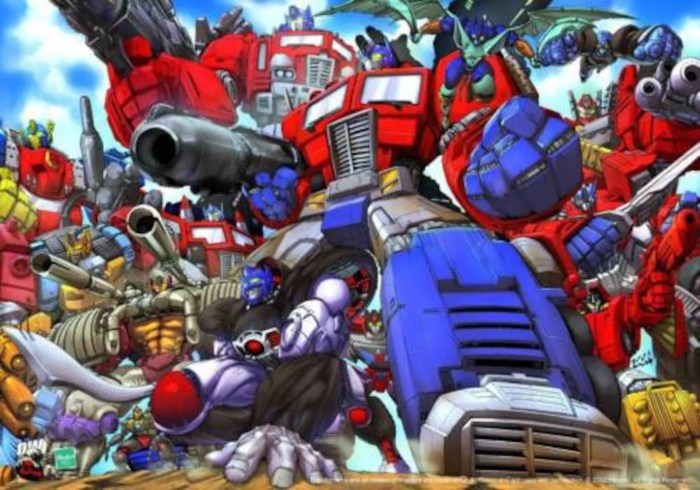Transformers One opens the door to a captivating exploration of the groundbreaking transformer models, showcasing their versatility and impact on the field of Natural Language Processing. Dive into the intricate architecture of these models, discover their advantages and limitations, and witness their real-world applications that are reshaping the way we interact with language.
Prepare to embark on a journey through the diverse variants of transformers, including BERT, GPT, and T5. Understand their strengths and weaknesses, and learn how to harness their capabilities for specific tasks. The art of fine-tuning transformers will be unveiled, empowering you to tailor these models to your unique needs and unlock their full potential.
Transformers Overview

Transformers are a type of neural network architecture specifically designed for processing sequential data, such as text or speech. They are based on the encoder-decoder architecture, where the encoder converts the input sequence into a fixed-length vector, and the decoder generates the output sequence based on the encoded vector.
Transformers One, the thrilling animated series, has captivated audiences with its epic battles and dynamic characters. Its popularity has extended beyond the screen, inspiring collaborations with various industries. One such collaboration is the partnership with Raymour & Flanigan Furniture Deptford , a renowned furniture retailer.
This collaboration brings the iconic Transformers characters to life through exclusive furniture pieces, creating a unique and immersive experience for fans of both Transformers One and home décor.
The key innovation in transformers is the use of self-attention mechanisms, which allow the model to attend to different parts of the input sequence and capture long-range dependencies. This makes transformers particularly effective for tasks that require understanding the context of the input, such as natural language processing (NLP) and machine translation.
Advantages of Transformers
- Can process sequential data of variable length.
- Capture long-range dependencies through self-attention mechanisms.
- Parallelizable, making them suitable for large-scale training.
Limitations of Transformers
- Can be computationally expensive to train.
- Require large amounts of data for optimal performance.
- May struggle with tasks that require reasoning or commonsense knowledge.
Applications of Transformers
- Natural language processing (NLP): Machine translation, text summarization, question answering
- Computer vision: Image classification, object detection, image segmentation
- Speech recognition and synthesis
Transformer Model Variants: Transformers One
Transformer model variants are specialized architectures derived from the original Transformer model, each tailored to specific tasks and domains. These variants extend the Transformer’s capabilities and address limitations, offering a diverse range of options for natural language processing (NLP) applications.
Prominent Transformer model variants include BERT (Bidirectional Encoder Representations from Transformers), GPT (Generative Pre-trained Transformer), and T5 (Text-To-Text Transfer Transformer). Each variant possesses unique strengths and weaknesses, making them suitable for different NLP tasks.
BERT
BERT is a bidirectional encoder model that excels in tasks involving understanding the context and relationships within text. Its bidirectional nature allows it to process input sequences from both directions, capturing dependencies and semantic meanings effectively. BERT is particularly well-suited for tasks such as question answering, text classification, and named entity recognition.
GPT
GPT is a unidirectional decoder model known for its impressive text generation capabilities. It generates text sequentially, predicting the next word based on the preceding context. GPT excels in tasks such as language modeling, dialogue generation, and text summarization. Its ability to generate coherent and fluent text makes it a valuable tool for natural language generation applications.
T5, Transformers one
T5 is a text-to-text transfer transformer model that unifies various NLP tasks into a single framework. It treats all tasks as text-to-text transformations, enabling it to handle a wide range of tasks with a single model. T5 demonstrates strong performance in tasks such as machine translation, question answering, and summarization, offering versatility and efficiency.
Fine-tuning Transformers

Fine-tuning transformers involves adapting a pre-trained transformer model to a specific downstream task. This process is crucial for leveraging the powerful representation capabilities of transformers while tailoring them to particular application domains.
Fine-tuning techniques include:
Transfer Learning
Transfer learning leverages knowledge acquired from a pre-trained transformer model on a general task to enhance performance on a related but more specific task. This involves freezing the lower layers of the transformer, which contain generic features, and fine-tuning the upper layers responsible for task-specific representations.
Task-specific Optimization
Task-specific optimization involves modifying the transformer architecture or training objectives to better align with the target task. This can include adding task-specific layers, modifying the loss function, or incorporating domain-specific knowledge into the training process.
Selecting the Appropriate Transformer Model and Fine-tuning Strategy
The choice of transformer model and fine-tuning strategy depends on several factors, including:
- Task complexity:More complex tasks require larger and more powerful transformer models.
- Data availability:Fine-tuning requires a sufficient amount of labeled data to prevent overfitting.
- Computational resources:Fine-tuning transformers can be computationally intensive, especially for large models and complex tasks.
Final Summary

As we conclude our exploration of Transformers One, we marvel at the transformative power of these models. They have revolutionized NLP, enabling machines to comprehend and generate language with unprecedented accuracy and sophistication. The future holds endless possibilities for transformers, and we eagerly anticipate the groundbreaking advancements that lie ahead.
Common Queries
What are the key advantages of transformers over other NLP models?
Transformers offer several advantages, including their ability to process entire sequences of text simultaneously, their self-attention mechanism that allows them to capture long-range dependencies, and their encoder-decoder architecture that enables both comprehension and generation tasks.
How can I fine-tune transformers for my specific task?
Fine-tuning transformers involves adapting a pre-trained model to a new task. This can be achieved through techniques such as transfer learning, where the model’s knowledge from a related task is transferred to the new task, or task-specific optimization, where the model is trained on a dataset specific to the new task.